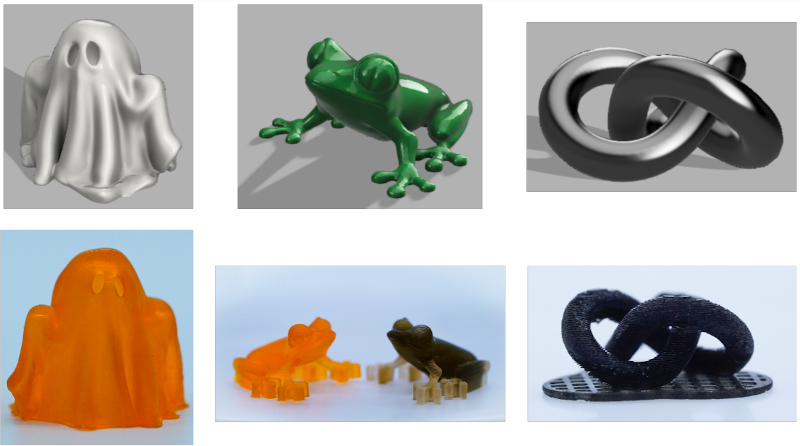Researchers at the University of Texas have been experimenting with optical 3D printing using near infrared (NIR) light instead of the more traditional ultraviolet. They claim to have a proof of concept and, apparently, using NIR has many advantages. The actual paper is paywalled, but there are several good summaries, including one from [3D Printing Industry].
UV light degrades certain materials and easily scatters in some media. However, decreasing the wavelength of light used in 3D printing has its own problems, notably less resolution and slower curing speed. To combat this, the researchers used an NIR-absorbant cyanine dye that exhibits rapid photocuring. The team reports times of 60 seconds per layer and resolution as high as 300 micrometers. Nanoparticles in the resin allow tuning of the part’s appearance and properties.
For now, the work is considered proof of concept, but it wouldn’t be hard to attempt work in this area in a hobby-grade workshop. Perhaps the most difficult part would be incorporating nanoparticles into the resin. Light in the 400 to 780 nanometer range mentioned by the team isn’t that hard to produce. LEDs are available, for example in that entire range; 400 nm is a violet color and 780 is decidedly red.
Last time we looked at NIR, there was coffee brewing. Turns out for many applications, seeing NIR is more interesting than generating it.
















Now, that sounds slightly bogus. Resolution of resin prints is indeed high but it’s nowhere near the wavelength of visible light, so moving from UV to NIR doesn’t seem to be much of a problem. The second problem may be more significant than just curing speed. NIR photons may not carry enough energy to trigger hardening process (think photoelectric effect). On the other hand if the resing reacts to NIR, than it may be difficult to handle in daylight. I am afraid there is much more behind that paywall, that we need to know.
Also, isn’t going from UV to NIR *increasing* the wavelength?
Yes. UV to NIR wavelength increases and energy decreses.
Yes. UV to NIR wavelength increases and energy decreases.
It increases the wavelength, but decreases the frequency. I suspect that was the brain fart that caused this mistake.
>> The actual paper is paywalled…
Often, if you simply contact the author, they will send you a PDF.
The paywall thing annoys them too, they *want* people to read their paper, and they usually have no contractual obligation not to share it outside the publication.
They should really consider posting their paper on a non-paywalled site as well then. Personal websites, MEGA, Piratebay, youtube, wikipedia, pastebin, there are a ton of ways they can post their papers so that people can find it without having to track down an unknown email address first.
That gets you in trouble with the publisher (been there done that), but you can’t help it if the paper ends up on SciHub or Libgen…
Arxiv and preprints helps and it is normally OK with publishers too.
So why cant Hackaday pay for the paper and share knowledge?
Because that’s not the way that copyright licenses work. We could buy one copy of the paper, but then we’d only be able to lend it out to you all one at a time, if then.
The author’s or publishing house’s copyright says that only _they_ are allowed to make copies of the text, or delegate that out.
Funny enough, Jenny has an article on copyright coming out later today. Stay tuned.
Can we make copies? :-D
Because that would be against the conditions of the paywall site. I’ve got access to the paper and had a quick browse through it, but sharing it (or at least publicly publishing it) would be a definite no-no.
The author is free to post their pre-print of it anywhere.
I posted my preprints regulary on https://arxiv.org/ … it is not sci-hub or libgen as it is focused on pre-prints and non-final versions but still a good resource. Main purpose was to generate some evidence, who had the original idea before sending it in for review. Some reviews (reviewer question rounds…) take over 6 month to conclude and even get delayed on purpose as the reviewers might be working in the same specialized field although I think this is rather rare attitude.
“The team reports times of 60 seconds per layer and resolution as high as 300 micrometers.”
I hope they can do better than that, for a narrow print that’s atrocious for a filament printer!
I had similar thoughts. Hopefully it’s just a matter of working out the best resin/ir wavelength combo. I’m sure in 3-5y we’ll see a printer hit the market that uses ir wavelengths.
Where can I find the models in the image at the top of this article? That Gordian knot looks like something I need on my desktop!